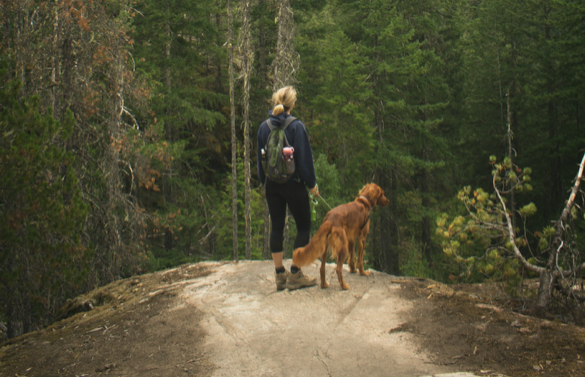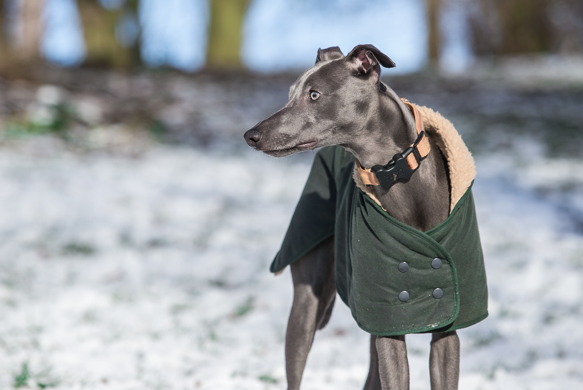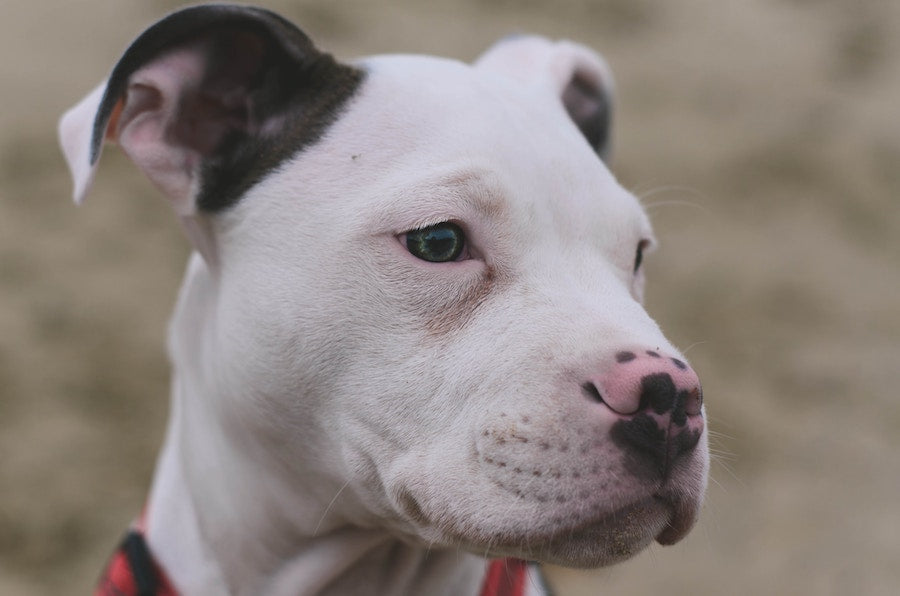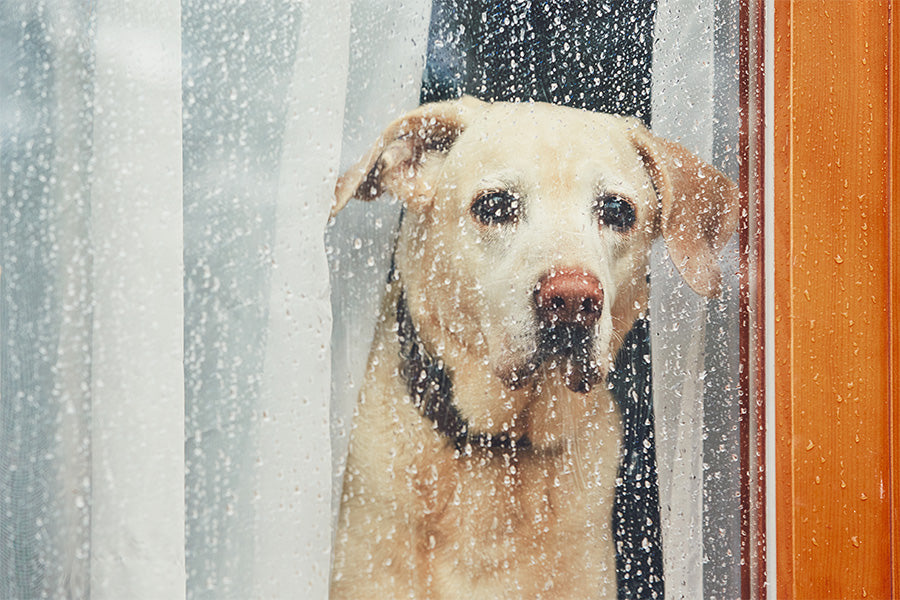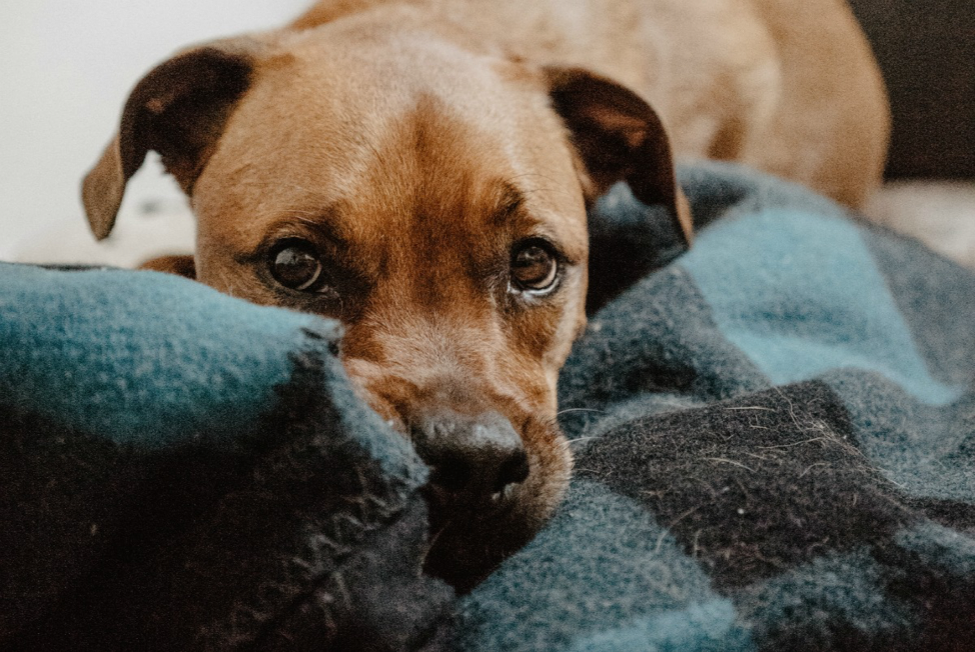News
-
December 24, 2018
The Surprising Benefits of Hiking with Your Dog
Let’s start with some hiking essentials before getting into the benefits...safety first! Most dogs will be delighted and ready to run out the door upon hearing that a walk is in order. For your dog, it’s not just a walk- it’s an adventure! -
December 18, 2018
3 Common Conditions of Dogs In Cold Weather
Dogs in cold weather can experience the same issues that humans do when in cold temperatures. Keeping your dog warm and safe when out in the elements is vital to their health and well being.
There are several conditions you should be aware of as a pet parent. Knowing what to look for and basic treatment could potentially save your dog’s life.Top 3 Conditions Common of Dogs in Cold Weather
Frostbite
Just like their human counterparts, dogs can get frostbite. Regardless of the amount or thickness of hair, any dog could end up with it. Thankfully, frostbite it not usually a fatal condition if it is recognized and treated quickly. If you are concerned that your furbaby has frostbite, look for pale skin or skin that has a blue-like color. The area that is affected by frostbite can also form ice. If that area is touched, you may notice a brittle feel to it.Once your dog’s skin is warmed back up to temperature, blisters, ulcers or peeling skin are all possibilities. If your dog does get frostbite, warm a towel in the dryer or with a hairdryer and apply to the area that is affected. Never place direct heat, using a heater or hair dryer for example, directly on your dog. The area needs to be warmed slowly. Always follow up with your vet afterward to ensure there are no side effects.
Hypothermia
Hypothermia can potentially occur to dogs in cold weather for too long. Shivering, pale skin or lethargy are all symptoms of hypothermia. Hypothermia can quickly happen if your dog is exposed to severely cold temperatures, especially while having wet fur. Hypothermia can become fatal in dogs, so immediate care must be taken.If your dog is experiencing symptoms, get your dog wrapped in blankets or towels heated in the dryer. Next, get a hot water bottle on your dog’s abdomen or a heating pad that is on the lowest setting. Always get in touch with your vet to discuss further actions or schedule a post checkup.
Kennel Cough
Similar to a human cold, kennel cough is highly contagious. It is typically the result of the inflammation of the bronchial tubes. A dog that has a constant cough or a watery discharge coming out of their nose may need to be treated. The treatment that comes with kennel cough depends on exactly how bad of a case it is. Sometimes just rest and getting lots of water will be the cure. Other cases will require medication.
Almost all the above illnesses can be prevented by limiting your dog’s time in cold weather. Opt for shorter leashes for more controlled walks. Also, be aware of other dangers such as chemical snow melts, road salt, and antifreeze.There is also cold weather gear, such as coats, sweaters, and boots, to help keep your dog warm while outside. As always, make sure your pet has a comfortable collar and up-to-date ID tags. Cold weather is the worst time of year to potentially lose a pet.
Always pay attention to the temperature and only keep your dogs in cold weather a limited amount of time. If there is snow on the ground, keep outside time to a minimum. Also, plan outdoor activities around getting your dog inside relatively quickly.
Don’t be afraid to enjoy the winter with your dog. There are so many fun and memorable activities that both you and your pup can share. Keeping everyone warm and dry will make sure your dog doesn’t suffer afterward. Whenever in doubt about how long to walk your dog in the snow or cold, hiring a professional dog walker is a safe option. Don’t forget to invest in outdoor gear to keep your dog safe all winter long. -
December 10, 2018
The Most Comfortable Collar your Dog Will EVER Own
A padded dog collar is a dog’s best friend, just as dog’s themselves are man’s (and woman’s) best friend. As pet owners, we are always wondering how we can make our pets healthier, happier... more comfortable. When it comes to our four-legged furiends, the answers are often very simple!
For most of us, when we are walking for an extended period of time, comfort is king. It should be the same for your pooch as well. Think about it, you’ve probably got your favorite comfy walking shoes that you depend on. Shouldn’t your pooch have a comfortable dog collar to make their walks that much more enjoyable too?
You might be thinking, “Meh, it probably doesn’t matter that much. I’ll just buy this super sparkly one!” The problem with that thinking is that, yeah, it actually does matter! Your pet's collar is pulling on their neck throughout the day. This affects their breathing and is connected to their spinal cord. With that being said, having a padded collar is vital for many pets. There are plenty of collars out there that can hurt so making the right choice is important.
It’s time to stop worrying so much about how fancy your pet’s collar looks. Instead, let’s talk about why you should seriously consider a padded dog collar. We promise, your dog won’t be upset if it doesn’t sparkle or have spikes!
Benefits of a Padded Dog Collar
Those comfortable walking shoes you likely wear on your walks help to cushion your feet. Similarly, a padded material provides a cushion between your dog’s neck and their collar. Dogs whose necks may chafe can really benefit from having a padded, comfortable dog collar. Those fur-babies with the sensitive skin would benefit greatly as well. They could wear it all of the time without the hassle of having to constantly remove and put it back on.
This type of collar is perfect for short hair dogs like Beagles and Australian Terriers. They’re not likely to cause hairlessness via rubbing. Baldness prevention aside, the best thing that a padded dog collar does is distribute pressure evenly across your dog’s entire neck.
These functional and comfortable dog collars are also good for puppies. We all know these adorable, hyper cuties tend to pull quite frequently on their leashes. A padded collar can prevent them from having sore or injured tracheas. Once a dog has this condition, however, they should really only be walked on a harness only.
Dog Collars That Can Harm Dogs
Ok, we’ve discussed why a comfortable dog collar is a good thing for your four-legged friend. Now, we’re going to talk about the other end of the spectrum. Below are examples of collars that you should stay away from. They can do serious harm to your dog and should only be used by a professional dog trainer.
Choke Collars
These are potentially dangerous and can have serious psychological effects on your dog. This is due to the fact that they simulate the sensation of choking when they tighten. This can cause dogs to become fearful. Choke collars can also cause whiplash, fainting, spinal cord injuries, paralysis, crushing of the trachea, and prolapsed eyeballs.
Prong Collars
The metal protrusions can actually pinch and puncture your dog’s skin. Scars may form over time which causes an eventual tolerance to the pinching. The dogs then continue to pull at the “collar” which in turn causes more damage. These collars like the above choke collars also simulate choking and can cause dogs to become aggressive and fearful.
Shock Collars
A dog wearing a shock collar can suffer from injuries like burns and cardiac fibrillation. There is also the risk of psychological stress like anxiety and aggression.
Now you’re aware of just how much harm the wrong kind of collar can do to your dog. Even a regular dog collar can cause harm to certain dogs. On the other hand, the benefits of a padded dog collar are priceless. Our pets provide us with unconditional love, connection, and life lessons like living in the moment. Simply providing them with the love, care, and comfort they need is the least we can do!
-
December 02, 2018
5 Rainy Day Indoor Activities to Play with Your Dog
Is your dog tired of chasing his own tail around on those rainy days? Are they sitting at the front door with sad puppy eyes, yearning to go outside? Remember, it is important to keep your dog busy with physical and mental stimulation, even when they are indoors.
The following Indoor activities for dogs will help maintain your best friend’s healthy bones, muscles, joints- and their minds! Just like humans, mental stimulation is also just as important as physical activity with dogs. They benefit from new experiences and challenges. Remember, it takes a dog repetition to learn something new, so keep at it. There are many ways to stimulate your dog, but one of the best and easiest ways is by allowing them to interact with the great, big world around them- even when that world is indoors!
Engaging with your dog whether it’s during the dog days of summer or on a rainy day will also strengthen your bond while you both discover creative and fun indoor activities for dogs.
Tug of War
On those rainy days, offer a little exercise to your dog (and yourself) with the tried and true game of Tug of War. Dog games such as this are simple and only require a piece of rope and a willing dog partner. If you don't have a rope, fear-not, take several old socks and braid them, secure each end in a knot and instant tug-o-war rope! Your dog will love battling it out with you for the win!
Hall Ball
Every dog loves to play fetch, and just because it's raining out doesn't mean you still can't! First, find a long hall, basement area or open room. Then, roll a tennis ball down the hall and allow your dog to race after it. Turn it into a fun indoor game of monkey in middle by getting some family or friends in on the action!
Teach an Old Dog New Tricks
A rainy day is pawsitively the best time to teach your dog (young or old) new tricks! When it's sunny out, you’ll both want to be frolicking outside so when the rain sets in, take this time to work with Fido on a new trick or two. Remember, repetition is the key to success! Your dog
craves stimulation and teaching them new tricks is just the ticket! Stay patient and enjoy your indoor time together!
Search and Sniff
With fond memories of hide and seek as a child, re-make those moments with your dog buddy! Indoor activities for dogs can often be taken from indoor games you played as a child. Hide and seek or search and sniff will engage your dog mentally and physically, keeping your dog busy all day long. There are several ways to play; our favorite is to show your dog an item (a favorite toy or treat works best), let them sniff it and then hide it while they then have to retrieve it. You'll be amazed at the fun you will have and at the hours that will pass by quickly.
Indoor Dog Park
If your pooch has nearby doggy friends why not invite a few over and set up an indoor dog park!? Turn your basement or garage into a doggy playland complete with rope toys, balls, and more. It’ll also be fun for the owners to relax and watch the dogs play the day away. Be sure to have plenty of water available and your dog’s favorite treats. By the end of the day, your dog will be ready to hit the sack and they just might dream about the next indoor activities for dogs you’ll come up with on the next rainy day.
Dogs love to play, run, and be challenged. This does not have to stop because of rain, cold weather or an indoor living arrangement. Think outside the bark box and you will find indoor activities for dogs that will continue to challenge and entertain! With so many ways to keep your dog active inside, you'll be wishing it rained cats and dogs more often (maybe)!
Rain or shine, Ruff Life Gear is here to make life with your dog sunny and bright! Our best-selling coil leashes are a durable, fun, and functional dog leash that can be used during any weather for a tangle-free walking solution. Click here to shop!
-
November 25, 2018
Diabetes in Dogs: Causes, Symptoms, Treatment, and Prevention
Diabetes in dogs has become increasingly common in today’s society. While the news that your dog may have diabetes can be shocking, it’s not a death sentence and certainly is a manageable disease with the proper knowledge and plan in place.
The first step is knowing what diabetes is exactly so you can understand what it is your dealing with.
Canine diabetes comes in several forms but they all point to the issue of having too much glucose in the blood. This happens when your dog's pancreas is not functioning properly resulting in either no insulin being produced or not enough. Insulin is the hormone that manages glucose (sugar coming from carbohydrates in food) by turning it to energy for your body or storing it up for future use. Unfortunately, if insulin cannot properly do its job, it can introduce a host of problems linked to diabetes which for canines comes in two forms: Type I diabetes and Type II diabetes.
- Type I: Insulin-deficiency: When a dog’s pancreas is not producing a sufficient amount of insulin.
- Type II:Insulin-resistant: When a dog’s pancreas is producing insulin but the body is not responding to it or utilizing it properly.
Note: Type I diabetes is considered the most common form of K-9 diabetes.
Now that you know what it is, let’s first talk about prevention- after all, an ounce of prevention is worth a pound of cure!
Prevention and Causes of Diabetes in Dogs
The most common cause of diabetes in dogs obesity. Because most processed dog foods contain an absorbent amount of carbohydrates (most carbs aren’t even a dietary need for dogs), all that gets turned into sugar in your pet’s body. Feeding your pet a portion-controlled and organic diet can help reduce your dogs’ chances of developing diabetes significantly.
Another cause of diabetes in dogs is the lack of exercise. Taking time out of your day to ensure your pet is burning carbs is another step you can take to keep them healthy in happy. Investing in a running belt to walk your dog conveniently is a great option for busy pet parents.
Other causes of canine diabetes include autoimmunity, breed, GMOs, chronic inflammation, metabolic syndrome, yearly vaccinations, and chronic pancreatitis.
Symptoms of Diabetes in Dogs
The signs of canine diabetes can be hard to spot especially in the early stages. There are certain behaviors you should look out for, however, in order to catch it as early as possible.
The sooner you are able to identify the disease, the easier it will be to treat. Dogs with diabetes can still live a long and happy quality of life but you need to be aware of the following changes:
- Increased urination
- Increased thirst and/or hunger
- Increase in sleep/Lethary/No energy
- Cataracts/Vision problems
- Skin Infections
- Nausea/Vomiting
- Kidney Failure
- UTIs
- Seizures
- Ketoacidosis
Treatment of Diabetes in Dogs
Should your vet diagnose your dog with diabetes, which is done via a simple blood test, a strict regimen will be needed to manage the disease. It will involve a commitment to monitoring your pet’s glucose levels, daily injections, and regular vet visits. Once a routine is established, you and your pet will know exactly what to expect and what needs to be done.
Just as a proper diet and exercise are important for preventing diabetes, they are also a vital aspect of treatment as well. Having a close relationship with your pet will help ease any worries or fears you may have concerning your pet’s care. Including any family, friends, or pet care partners such as a dog walker will also help in managing tasks. Diabetes in dogs is usually a highly preventable disease. Taking the proper steps to make sure your dog is healthy will not only prevent their chances of developing diabetes but many other health issues as well.

